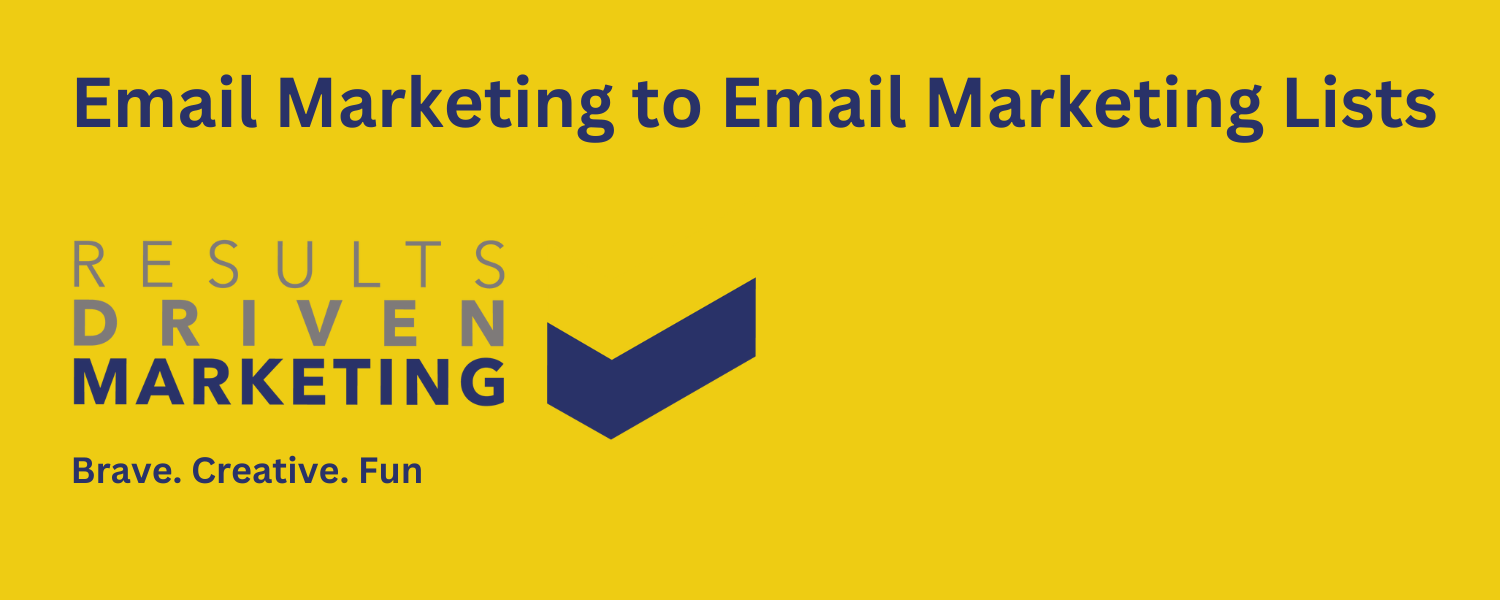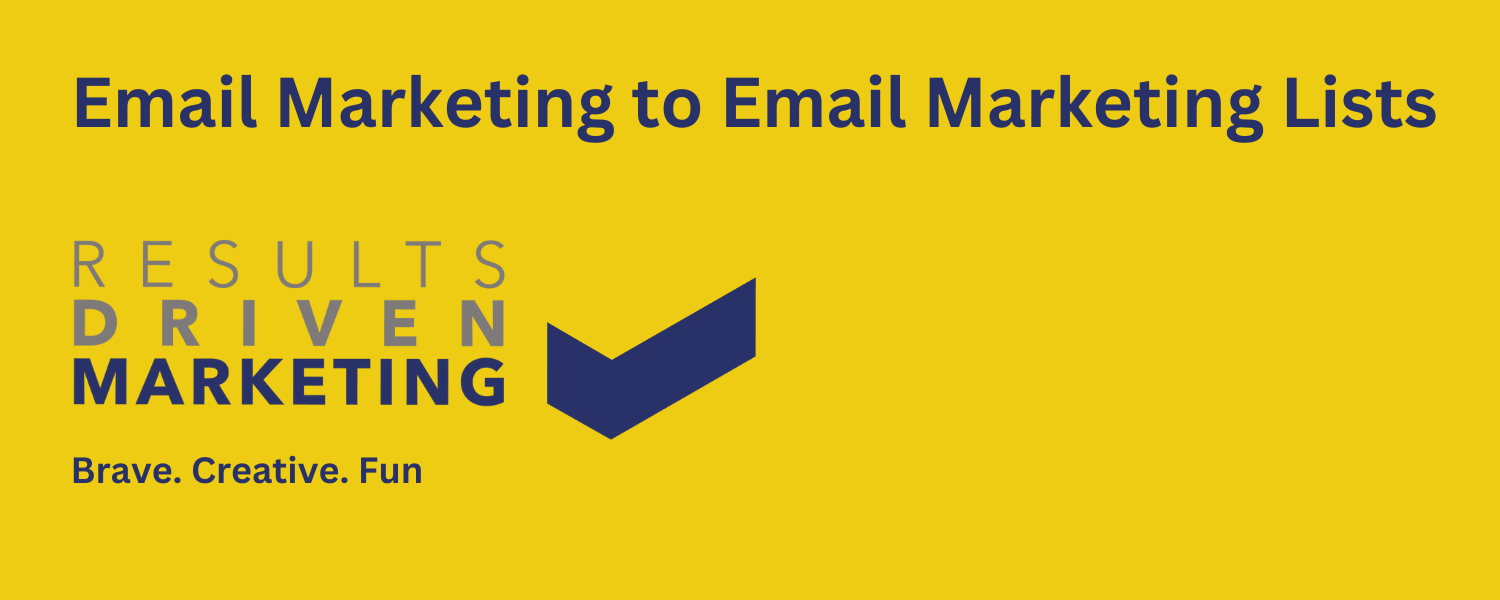
Email Marketing Lists UK – All you need to know
Email Marketing Lists UK are a collection of contact information – email addresses and other relevant information – of businesses and/or individuals who may potentially be interested in a company’s products or services.
Email Marketing Lists UK can be used for campaigns to generate leads, customer communications, sales distribution and more.
What are Email Advertising Lists in UK used for?
Marketing mailing lists are used for direct mail campaigns, promotional mailings, and targeted marketing.
These lists are typically compiled from different sources to create an up-to-date list of customers, prospects, and subscribers.
Business mailing lists are often used to send newsletters, product updates, special offers, and other related communications.
Why are they so important?
Business marketing lists are important because they provide a way to quickly target potential customers with specific messages that are likely to be of interest to them.
Business marketing lists allow businesses to quickly and easily target a specific and relevant audience to ensure higher conversion rates and increased engagement.
These lists can be easily customised to the target market and are the most cost-effective means of marketing.
Additionally, with business mailing lists, companies can reach a larger and more engaged customer base, help to build relationships with customers, generate leads, and create brand awareness.
What are the main benefits if you buy Email advertising lists in UK?
Access to Highly Targeted Contact Information
Marketing lists can help businesses segment target audiences quickly and accurately.
This helps ensure that the right people and companies get the right messages.
Low Cost Marketing
Bulk marketing lists are one of the most cost effective marketing tools available to businesses.
By having access to an accurate and up-to-date list of contacts, companies can save time, money, and resources.
Increased Brand Recognition
Sending direct mailers to targeted audiences can help build brand recognition.
Brand messaging can be easier to understand through direct mail and help create recognition among potential customers.
Increased Connections with Potential Customers
Business mailing lists can help companies make connections with potential clients.
By connecting with the right people, businesses can create meaningful relationships with their target audiences.
Opportunity to Increase Sales
With the right mailing list, businesses can increase sales opportunities.
By targeting the right people, businesses can identify potential customers and create a tailored marketing message to reach them.
Improved Quality of Leads
Quality leads create better sales.
By utilising mailing lists, businesses can access information to segment the right contacts and create highly targeted campaigns.
This will help ensure that the leads generated are of high quality.
What are the different types of Email Advertising Lists UK?
Industry Specific Email Advertising Lists
These lists include detailed information on businesses within a specific industry, including information on location, size and contact details.
Targeted Email Advertising Lists
These lists focus on specific criteria, such as geography, demographics, and size, so that you can focus on the customers that you’re interested in marketing to.
Executive Lists
These are high-end business lists focused on C-level executives and senior decision makers within an organisation.
Compiled Email Advertising Lists
These are lists compiled from publicly available sources that offer basic contact information, such as name and email address.
Specialty Business Lists
These lists are tailored to include businesses that fit within the parameters of the particular industry you’re interested in.
How to build Email Advertising Lists UK?
Use opt-in forms on your website or landing pages
Include an opt-in box on company invoices or receipts
Collect email addresses at trade shows, conferences, or other events
Leverage social media
Utilise any partnerships or connections you have
Offer incentives for signing up
Buying a third-party Email Advertising lists in UK
There is so much to cover that I won’t go into full detail now, but I will cover the absolute basics.
Make sure you have a clear data brief
It is essential to understand exactly who your target audience is and to develop an ICP.
You can do this on your own but may want to consider working alongside a supplier like Results Driven Marketing at this point to help you ask the questions of your customer database that you need to.
These questions might be along the lines of:
Where are your top customers located geographically?
What sectors do they operate in?
How many staff do they have?
How much do they turnover?
Who within those organisations do you look to target?
Make sure your potential supplier provides you with samples and breakdowns
Getting this information is really important to make sure that your supplier fully understands your brief and is aware of exactly what your ICP is.
At Results Driven Marketing, we supply both breakdowns and then samples.
This makes sure clients are comfortable that we clearly understand and will be delivering a database that will work for you.
Check the licensing terms
Post-GDPR, most suppliers offer licensed products. The most common is a 12-month multi-use licence.
This might sound like you can use it as much as you like over a 12-month period but may actually be limited to 12 email sends only.
We find that 12 emails sends over a 12-month period are adequate, but it is important that you understand all the usage rules before you dive in.
Check supplier accuracy guarantees
Is the supplier’s database guaranteed accurate? What if you get it and all the emails bounce?
Ask your supplier what guarantees they have in place should things not work out as you would expect.
All files released by us are guaranteed accurate to industry high standards and are GDPR compliant.
We guarantee:
- 98% postal address accuracy
- 90% telephone number and contact name accuracy
- 90% email address accuracy
Should we fall below and of the above benchmarks, we are obliged to provide like-for-like replacements or a pro-rata refund.
Visit us here for more information.
How to segment email advertising lists for marketing
Collect and analyse customer data
Create customer segments
Identify your target audience
Create targeted campaigns
How to maintain Email advertising lists?
Keep it Up-to-Date
Make sure your business mailing list is always up-to-date.
Regularly review and delete outdated email advertising list, add new contacts, and update missing or incorrect customer information.
Reach Out Regularly
Make sure to reach out to your contacts regularly with professional messages and offers.
If you’re not contacting your list regularly, you’re likely not getting the return you’d expect.
Segment Contacts
Segment your contacts into different lists so you can better target your messages.
You can also create custom audiences based on customer behaviours, interests, or demographics.
Utilise Automation
Use automated processes and triggered emails to simplify the process of engaging contacts.
You can use automation to save time and ensure that no customer goes unnoticed.
Analyse Your Data
Use analytics to get valuable insights from your business mailing list.
Analyse your contact data to measure the success of your campaigns, uncover trends and opportunities, and understand your customers better.
How to cleanse your list?

Marketing to Email Marketing Lists UK
Challenges of Marketing Products and Services through Email Marketing Lists in the UK
In the fast-paced digital age, marketing products and services effectively is crucial for businesses seeking to thrive in a highly competitive landscape. Email marketing has proven to be an invaluable tool for connecting with potential customers and nurturing existing ones. The use of targeted email marketing lists in the United Kingdom (UK) can enhance the efficacy of campaigns and improve the return on investment (ROI).
However, this marketing strategy comes with its unique set of challenges. In this article, we will explore the hurdles businesses face when marketing products and services to email marketing lists in the UK.
Data Compliance and Privacy Concerns: One of the primary challenges facing marketers using email lists in the UK is ensuring data compliance with local and international regulations. The General Data Protection Regulation (GDPR), applicable in the UK and the European Union (EU), sets strict guidelines for the collection, storage, and usage of personal data.
Companies must obtain explicit consent from individuals before adding them to their email marketing lists, which can be a cumbersome process. Failure to comply with these regulations can result in severe penalties and damage to a brand’s reputation.
Maintaining List Relevance: As email marketing lists grow, maintaining their relevance becomes an ongoing challenge. People’s interests and needs change over time, and inactive subscribers can become disengaged.
Marketers must regularly clean and update their email marketing lists to avoid sending irrelevant content to uninterested recipients, as this can lead to increased unsubscribe rates and diminished engagement.
Deliverability and Spam Filters: In the UK, just as in other parts of the world, spam filters are becoming increasingly sophisticated. They can block emails that are considered irrelevant or potentially harmful, and this poses a challenge to marketers.
Even legitimate emails may sometimes end up in recipients’ spam folders, significantly reducing the chances of them being opened and read. Maintaining a good sender reputation and adhering to best practices in email marketing can help improve deliverability rates.
Designing Compelling Content: With the inundation of emails in people’s inboxes, grabbing their attention with eye-catching and engaging content is paramount. Designing compelling emails that stand out amidst the clutter can be challenging. Marketers must create visually appealing content with a clear and concise message that resonates with the target audience. Striking the right balance between text and visuals while ensuring mobile responsiveness is essential to maximize the impact of email campaigns.
Email Open and Click-Through Rates: The success of an email marketing campaign largely depends on open and click-through rates. However, getting recipients to open emails and take the desired action can be difficult. Crafting enticing subject lines and compelling calls-to-action is an ongoing challenge. A/B testing and analyzing campaign metrics can help optimize email content for improved performance.
Competition and Email Fatigue: The UK market is highly competitive, and consumers receive countless marketing emails daily. This saturation can lead to email fatigue, where recipients become disinterested in promotional content. To overcome this challenge, marketers must offer unique value propositions, personalized content, and relevant offers that cater to the specific needs and preferences of their audience.
Email Automation and Personalization: While automation can streamline email marketing efforts, striking the right balance between automation and personalization can be tricky. Sending generic, mass emails can alienate subscribers, while over-personalization might seem intrusive. Crafting automated yet personalized messages that resonate with recipients requires constant monitoring and fine-tuning.
In conclusion, marketing products and services through email marketing lists in the UK offers immense potential for businesses seeking to connect with their target audience. However, it comes with its share of challenges, such as data compliance, maintaining list relevance, deliverability concerns, designing compelling content, and overcoming competition and email fatigue.
By adopting best practices, leveraging data insights, and regularly optimizing strategies, marketers can navigate these challenges and harness the power of email marketing to boost engagement, conversions, and long-term customer loyalty.
Crafting Compelling Value Propositions for Promoting Products and Services through Email Lists for Marketing
In today’s competitive business landscape, creating a strong value proposition is essential for capturing the attention of potential customers and persuading them to choose your products or services. When it comes to promoting products and services through email marketing, a compelling value proposition becomes even more critical. Email advertising lists for marketing offer a valuable platform to reach a targeted audience, but to stand out in crowded inboxes, your value proposition must resonate with recipients instantly. In this article, we will explore effective strategies for crafting compelling value propositions that drive engagement and conversions when promoting products and services through email marketing lists for marketing.
Understand Your Target Audience: The foundation of a compelling value proposition lies in understanding your target audience. Research and analyze your email marketing lists to gain insights into your subscribers’ preferences, pain points, and aspirations. Tailor your value proposition to address their specific needs and desires. Personalization is key to creating a connection with your audience, making them more receptive to your message.
Focus on the Unique Selling Points (USPs): Highlight the unique selling points of your products or services that set them apart from competitors. Whether it’s a distinctive feature, superior quality, or exceptional customer service, clearly communicate what makes your offerings special. Emphasize the benefits your target audience will experience by choosing your brand, demonstrating how your products or services solve their problems or fulfill their desires.
Use Clear and Concise Language: In the fast-paced digital world, attention spans are limited, especially when it comes to email. Craft your value proposition using clear and concise language that gets straight to the point. Avoid jargon and complex terminology, as they may confuse or deter readers. Focus on expressing the value you provide in a few impactful sentences, making it easy for recipients to grasp the essence of your offer quickly.
Quantify the Value: To make your value proposition more compelling, quantify the benefits your products or services offer. Whether it’s cost savings, time optimization, or productivity improvements, using specific numbers and data adds credibility to your claims. For example, “Save up to 30% on your monthly expenses” or “Increase sales by 50% within six months.” Quantifiable results make your value proposition more tangible and attractive to potential customers.
Use Powerful Visuals: Incorporate visuals into your email marketing campaigns to complement your value proposition. Images, infographics, and videos can help convey complex information in a visually appealing way. Visuals not only capture attention but also create a lasting impression. Ensure that the visuals align with your brand identity and enhance the message you want to convey.
Leverage Social Proof: Adding social proof to your value proposition can instill confidence in your brand and offerings. Testimonials, reviews, case studies, and customer success stories can demonstrate the positive experiences others have had with your products or services. Social proof reinforces the trustworthiness of your brand, making your value proposition more persuasive.
Create a Sense of Urgency: Encourage action by creating a sense of urgency in your value proposition. Limited-time offers, exclusive deals, or early-bird discounts can motivate recipients to take immediate action. Phrases like “Act Now” or “Limited Stock Available” can prompt readers to act before they miss out on the opportunity.
A/B Test and Iterate: To optimize the effectiveness of your value proposition, conduct A/B testing with different variations. Test different messaging, visuals, and calls-to-action to identify what resonates best with your audience. Continuously analyze the results and iterate your value proposition based on the insights gained.
In conclusion, crafting compelling value propositions is a vital aspect of successful email marketing campaigns. By understanding your target audience, focusing on unique selling points, using clear language, quantifying the value, incorporating powerful visuals, leveraging social proof, creating a sense of urgency, and continuously testing and iterating, you can create value propositions that captivate recipients and drive engagement. Remember, your value proposition is the key to persuading potential customers to choose your products or services over competitors, making it an indispensable element of your email marketing strategy.
Marketing to Email Marketing lists UK
What are the benefits of email marketing to a marketing list in UK?
Cost-Effectiveness for email marketing lists
Email marketing is much cheaper than traditional methods of marketing such as direct mail, radio or television ads, or even search engine optimisation. It also requires very little effort to set up and maintain.
Flexibility
Email marketing allows you to easily tailor messages to different audiences or demographics, and you can adjust the timing of when they’re sent.
Reach and Targeting for email market
Email marketing lists provide you with the ability to send messages directly to the desired recipients and with specific targeting.
Thus, you can hone in on the types of people who might be interested in your product or service and send them specific messages that cater to their interests.
Automation
Email marketing campaigns can be automated, which not only simplifies the process but also enables you to stay in touch with your contacts.
Increase Inbound Traffic
Sending emails to potential customers who have expressed interest in your company or products can help to generate inbound traffic to your website or other online presence.
Easy Tracking
It is easy to track email performance with tools such as Google Analytics or other third-party analytics programs.
This allows you to monitor how successful your email campaign was and make adjustments for future efforts.
Best practices for email marketing to Email marketing lists UK
Make sure your email copy is succinct, relevant and engaging
Utilise personalisation
You can use customer or demographic data to tailor emails to relevant subscribers.
Leverage segmentation
You should segment your database into different categories and target each group with emails that are tailored to their interests.
Include a call to action
Let subscribers know what you want them to do in order to take the next step.
Utilise A/B testing
Experiment with different variables in your emails to maximise their performance.
Monitor your metrics
Track various metrics from your emails (such as open rate, click-through rate, and conversion rate) to make sure your messages are effective.
How A/B split test email marketing campaigns to Email marketing lists UK?
A/B split testing email marketing campaigns can be very effective in targeting UK mailing lists.
The most fundamental way to do this is to divide your sending list into two separate groups, referred to as a ‘control group’ and a ‘treatment group’.
The control group receives the traditional email that is being tested and the treatment group receives a slightly modified version of the same email.
After analysing the response from each group, a marketer can then determine which version performed best and implement that one for the entire mailing list.
The process should first involve creating different versions of an email campaign and then testing them both on the same targeted UK mailing list.
Marketers should use different elements of the email to test such as subject lines, copywriting and call-to-action buttons.
The analysis of the results should take into account open rates, click rates, and any resulting conversions or sales in order to determine which version was most successful.
Once the greatest performing email is determined, marketers can then amend the email and send it to the entire mailing list.
A/B split testing is a great way to ensure that any emails marketers send out to UK mailing lists are as effective as possible.
By carefully tracking the performance of each version, marketers can use such testing to optimise the overall email experience and drive more engagement and sales.
How to monitor the results of an email marketing campaign to Email marketing lists UK?
Monitor email performance metrics
It’s essential to keep track of key performance metrics such as open rate, click-through rate, and deliverability rate.
Doing this will help you get an accurate idea of how your emails are performing and identify areas that need improvement.
Analyse open rate
Open rate is an important metric in email marketing as it measures how successful your campaigns are in getting your email into potential customers’ inboxes.
To analyse your open rate, try segmenting your audience, split-testing different emails as well as subject lines and times of sending.
Calculate click-through rate
Click-through rate (CTR) measures how well your content resonates with customers by tracking how many people clicked on a link or call-to-action within your email.
Looking at CTR stats can help you improve future campaigns or identify which type of content works best for your target audience.
Leverage A/B testing
Split A/B testing is another good way to analyse the performance of your email campaigns.
It involves testing different elements like content, design, and send time to determine which factors are most successful at getting users to open and interact with your emails.
Survey your UK audience
Surveying customers is a great way to get feedback on how they perceive your emails and improve future campaigns.
You can send out a survey after each campaign and ask questions like what they thought of the content, design, and if they took any action after reading the email.
Email marketing call to actions
An effective email marketing campaign should include several different types of call to actions (CTAs).
CTAs are the methods used to get users to take the desired action, such as subscribing to an email list or making a purchase.
A successful email marketing campaign should utilise several different types of CTAs in order to optimise performance.
One of the most common types of CTAs used on email marketing campaigns is a “Subscribe Now” button.
This type of CTA is usually used to encourage users to subscribe to an email list. This type of CTA should be well-positioned on the page and have compelling copy that encourages the user to sign up.
Buy Now
Another type of CTA used on email marketing campaigns is a “Buy Now” button.
This type of CTA is meant to encourage users to make a purchase. This CTA should be linked to a product page and appear close to the product to increase the chances of conversion.
In addition to these two types of CTAs, there are also “Learn More” CTAs. This type of CTA encourages users to learn more about a product or service. This can include a link to a tutorial video, informative blog post, or even a product demonstration.
Finally, “Share Now” CTAs can also be used to encourage users to share your product or service with a friend. This type of CTA can be placed at the bottom of email messages or even just before the “Subscribe Now” button. The goal of this CTA is to make sharing your product or service as easy as possible.
By using a variety of different types of CTAs, email marketers can optimize their campaigns and improve their chances of success.
Utilising multiple types of CTAs can help to cast a wider net and capture more engaged users who are more likely to convert.
Don’t forget to include a call-to-action in your direct mail piece in order to maximise the effectiveness of your campaign.
Summary
The use of Email marketing lists uk has seen a dramatic increase as companies look for new methods to reach potential customers.
These mailing lists are lists of names and contact information for people or companies that may be interested in a certain product or service.
The purpose of this list is for businesses to be able to contact their target audience and make their marketing campaign more targeted and effective.
Mailing lists can be segmented into various categories based on different demographics, such as age, gender, occupation, location, income, and interests.
Businesses may also use primary and secondary research to create more precise, targeted mailing lists.
When choosing a marketing list, marketers should consider the list’s relevancy, accuracy, and freshness.
You can look here how to get the best ROI with email marketing.
Relevancy is determined by how closely the list matches the product or service being marketed.
Accuracy is important because if the list contains incorrect or outdated information, a business’s marketing efforts will be in vain.
Lastly, freshness is important because outdated information may be less accurate and lead to fewer conversions.
Businesses can also use a combination of email, direct mail, and telemarketing to reach their target audience.
Although these channels may be more expensive than simply using mailing lists, they have the potential to reach larger and more targeted audiences.
Additionally, businesses may need to combine these methods to maximise their reach and obtain better results.
Overall, business marketing lists can be a powerful tool for businesses looking to target their desired audience.
By utilising marketing lists, businesses can rest assured that their marketing efforts are more focused, accurate, and effective.
For more information about Results Driven Marketing and our third party mailing lists, feel free to contact us here.
Results Driven Marketing
0191 406 6399
LinkedIn | Twitter







